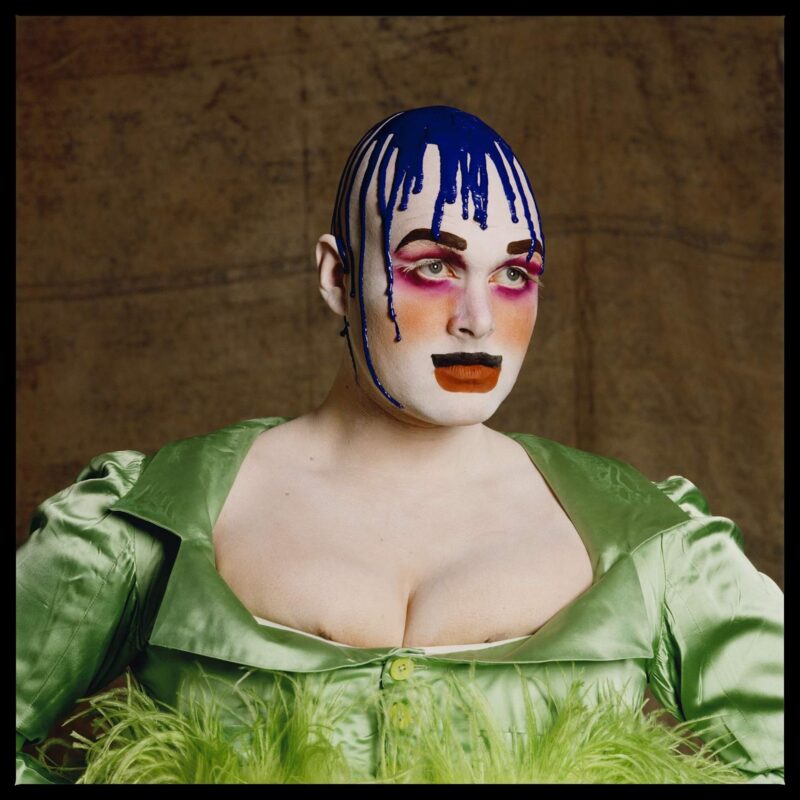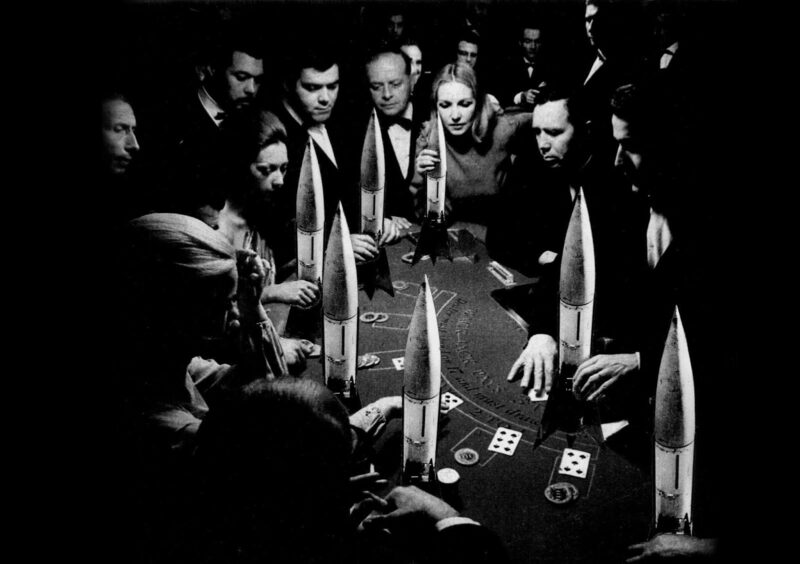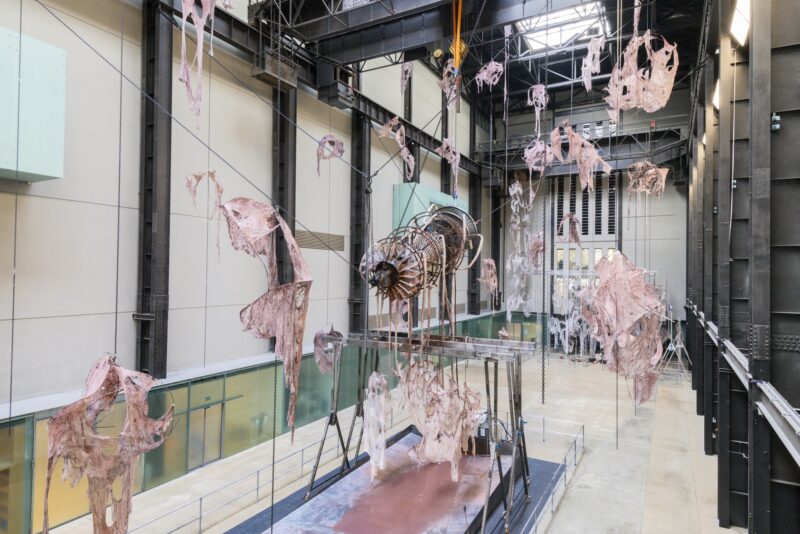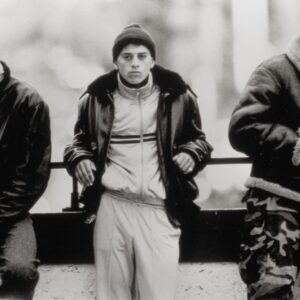Billed as the ‘largest group of Modigliani’s nudes ever shown in the UK’, Tate Modern’s new retrospective of the celebrated Italian artist has ‘Blockbuster’ written all over it. However to focus on his nudes, which were famously censored by Parisian police in 1917 when exhibited at Berthe Weil’s Gallery in what was Modigliani’s only solo exhibition, would mean missing out on the rich collection of portraits that document the life of artists and Patrons of the arts during Modigliani’s infamous Bohemian days in Montmartre. A collection of depictions of nude life models dominates gallery 8 of the exhibition, featuring women staring boldly out of the canvas. Professional life models earned 5 francs per sitting, roughly twice the daily wage of female factory workers during World War I, and their confident gaze reflects the growing emancipation of women in the early 20th century.
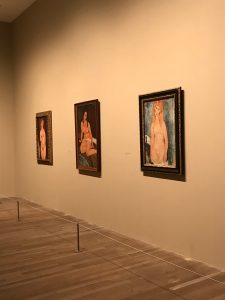
However, the composition and content of Modigliani’s nudes, with their visible pubic hair, attracted the attention of the Paris Police commissioner, who demanded their removal on grounds of indecency. It shows how little we have progressed in terms of artistic freedom and accepted views of the female form, when in today’s society images of women’s nipples or body hair are still censored by social platforms such as Instagram and Facebook.
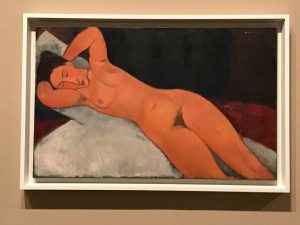
Although he gained notoriety for his nudes, Modigliani was a skilled sculptor, and in the Tate Modern exhibition there is a breath-taking room devoted to his exquisite sculpture. Rows of female busts with elongated features reference the sculpture of antiquity and ancient Egypt, and the Caryatids – classical female figures that supported architectural supports. These elongated features with almond-shaped eyes became a signature of Modigliani’s painting, which he turned to full-time after giving up sculpture due to its negative effect on his lungs that still suffered the effects of childhood tuberculosis.
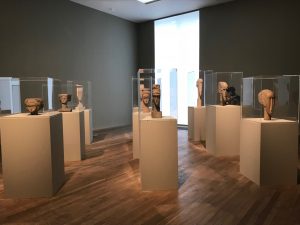
Aside from the magnificent nude paintings, there are portraits of many of Modigliani’s contemporaries, fellow artists who hung around with his Montmartre clique such as Picasso, Diego Rivera and Juan Gris. These portraits embody the artist’s recognisably angular, cubist style, whilst capturing the essence of the sitters and providing an insight into his inner circle. Even though Modigliani’s art dealer Leopold Zborowsi gave his protégée a daily stipend of 15 francs, he lived an ascetic life almost on the breadline but devoted to his craft. In the final months of the First World War, Zborowski sent Modigliani to the South of France as Paris suffered a battering from air raids and Modigliani’s health deteriorated. During his time in Nice his output was just as prolific, and left behind the dark muted palette of the city, taking on a warmer Mediterranean colour scheme.
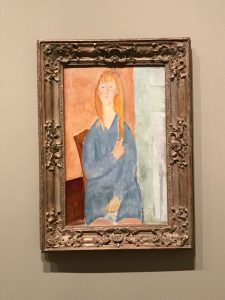
This vast exhibition spreads over 10 galleries and surprises with the sheer volume of work, especially when the short life of the artist is taken into consideration. Modigliani died, impoverished, at the young age of 35, and his funeral in 1920 was attended by a vast number of the artistic communities in Montmartre and Montparnasse. Tragically his fiancée Jeanne Hebuterne, who was pregnant with their 2nd child, committed suicide a few days after his funeral. Portraits of Hebuterne in the final gallery of the Tate exhibition depict a young, beautiful woman, with a hint of sadness in her eyes that betrayed her tragic fate.
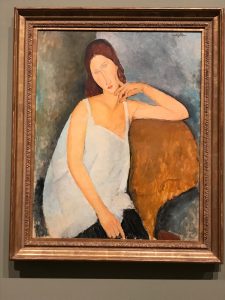
Tate Modern partnered with HTC VIVE on an incredible Virtual Reality experience ‘The Ochre Atelier’, which transports visitors into the Montmartre atelier of Modigliani. After putting on a VR headset, you experience a truly 360 degree view of his studio, which is lifelike to the point of the cigarette smoke in the ashtray by his easel, the rain falling outside the window onto the rooftops of Montmartre, and the paint squeezed onto his palette. By looking at white dots in the VR experience, you trigger different vocal narratives by people that knew the artist, and by scholars and curators.
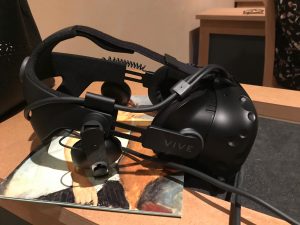
During the VR experience you see the self-portrait of 1919 which was on Modigliani’s easel when he died, and are able to see the real deal in the neighbouring gallery. The dark almond-shaped eyes and sunken cheekbones of the artist in his last painting seem even more haunting. A sad end to a short but prolific life marked by genius.
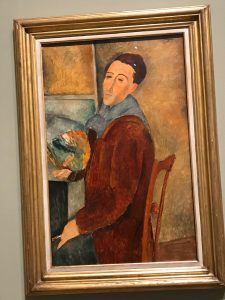
Modigliani is at Tate Modern until 2 April 2018
http://www.tate.org.uk

